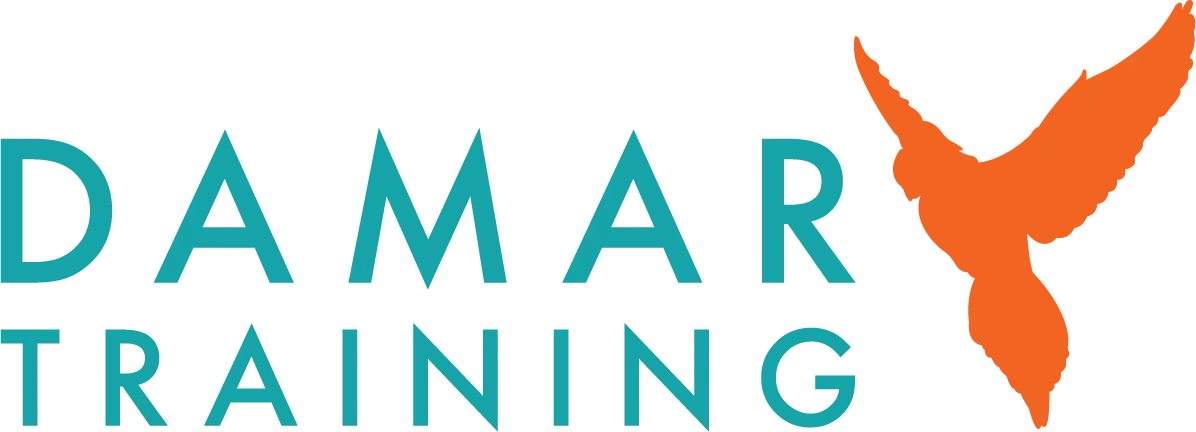Recruiting and developing talent has become more crucial than ever – and apprenticeships are a highly cost-effective and impactful solution. For larger organisations that pay the apprenticeship levy, understanding how the levy works is essential for strategic workforce planning and maximising the return on their mandatory contributions. So what is the apprenticeship levy?
In this blog post, we’ll demystify the apprenticeship levy, explaining its core principles and how you can use it to cultivate talent in your team. Here at Damar, we’re leading apprenticeship experts, so you can rely on us to provide you with the right advice and guidance to help you navigate and maximise the returns your levy can bring.
What is the apprenticeship levy and how does it work?
Essentially, the apprenticeship levy is a government initiative designed to fund apprenticeship training and address skills gaps in the workforce. Implemented in April 2017, the levy fundamentally changed how apprenticeships are funded in England, creating a system where larger employers contribute directly to a national apprenticeship funding pot.
The levy represents part of a broader government strategy to improve productivity, address skills shortages, and create more opportunities for people to train while they work. It’s also designed to encourage employers to invest in their workforce through apprenticeship programmes, which combine practical training with study.
Who pays the apprenticeship levy?
The levy applies to employers with an annual pay bill of more than £3 million. This threshold applies across all sectors, including both private and public sector organisations.
Smaller employers with an annual pay bill below £3 million are exempt from paying the levy but can still access apprenticeship training that is 95-100% government-funded.
How does the apprenticeship levy work?
Now that you understand what the apprenticeship levy is, we can break down how it works:
- The levy is charged at a rate of 0.5% of an employer’s annual pay bill. However, all employers receive an annual allowance of £15,000 to offset against their levy payment. This effectively means that only employers with a pay bill exceeding £3 million will pay the levy.
- The levy is then collected monthly through the Pay As You Earn (PAYE) system alongside income tax and national insurance.
- Once collected, the levy funds are transferred to an employer’s digital apprenticeship service account. The government adds a 10% top-up to these funds, meaning that for every £1 an employer pays into their account, they get £1.10 to spend on apprenticeship training.
- Employers can then use these funds to pay for upskilling existing employers and recruiting new apprentices with approved providers. The funds cannot be used for other costs associated with apprentices such as salaries or travel expenses.
One crucial aspect of the levy system is that funds expire after 24 months if not used. This “use it or lose it” approach encourages employers to actively engage with apprenticeship programmes rather than allowing contributions to accumulate indefinitely.
For employers who exhaust their levy funds, the government offers additional support through co-investment.
Apprenticeship levy rules and regulations
In order to maximise the apprenticeship levy’s full benefits, you should consider the following:
Geographical limitations: While the levy is collected from employers across the UK, the funds can currently only be used to support apprentices who work in England for more than 50% of their time.
Eligible expenditure: Levy funds can only be used for apprenticeship training and assessment with approved providers and assessment organisations.
Funding bands: Each apprenticeship standard is assigned to a funding band that sets the maximum amount of levy funds that can be used towards that particular apprenticeship. Find out more about what an apprenticeship standard is by reading our guide.
Transfers: Employers can transfer up to 50% of their annual levy funds to other employers, including those in their supply chain or sector.
Expiry of funds: Levy funds expire 24 months after they enter an employer’s digital account if not used.
Further information is available on the government website.
Be aware of recent changes…
The apprenticeship levy landscape continues to evolve. Following announcements at the 2024 Labour Party Conference, several developments are on the horizon:
- Changes to the funding of level 7 apprenticeships, with funding only being available for those aged under 22 from 1 January 2026
- Changes to how levy funds can be used, with the possibility that funds could be used for other types of training – details have not yet been released.
How can I maximise my apprenticeship levy investment?
As a levy-paying employer, you might be wondering how you can maximise your investment. Below, we’ve come up with some top tips that you can follow to ensure you’re getting the maximum value out of your apprenticeship programmes.
Align with business objectives: Successful apprenticeship programmes are those that align closely with an organisation’s strategic objectives and core values. By identifying skills gaps and future talent needs, you can design apprenticeship programmes that deliver genuine business benefits.
Engage stakeholders: Support from senior leaders and people managers is crucial for the success of apprenticeship programmes. Ensuring key stakeholders understand the benefits of apprenticeships can also help to secure buy-in across the organisation.
Consider both new talent and existing staff: The levy can be used to fund apprenticeships for both new recruits and existing employees. Many organisations will use the levy to upskill their current workforce, meaning that even experienced colleagues can benefit from the levy with programmes such as management apprenticeships.
Partner with quality providers: Working with experienced training providers like our team here at Damar Training, who understand your sector, can significantly enhance the quality and impact of apprenticeship programmes.
Manage your digital account: Regular monitoring of your apprenticeship service account is essential to track funds.
Let Damar help you understand the apprenticeship levy
Hopefully this blog has answered your question: What is the apprenticeship levy? It provides a significant opportunity for employers in England with a ring-fenced budget for workforce development and talent acquisition.
At Damar, we’ve been delivering impactful apprenticeships since 1980. If you’ve got questions about your organisation’s levy or you’re not sure that you’re using it as effectively as you could, please get in touch. We’re here to help.

